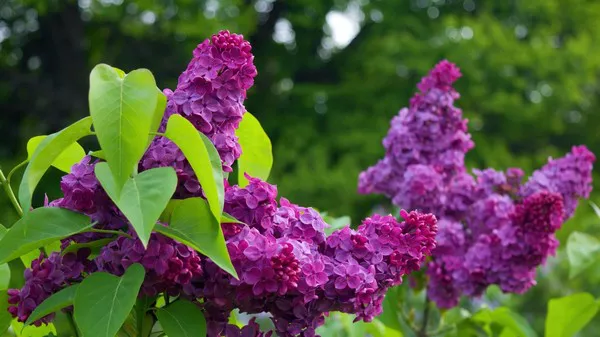Lilac flowers, renowned for their captivating fragrance and stunning appearance, have long been cherished by gardeners and floral enthusiasts alike. These beautiful blossoms belong to the Syringa genus and encompass a variety of species and cultivars. In this article, we will delve into the many ways to appreciate and utilize lilac flowers, exploring their history, cultivation, medicinal uses, and creative applications. Whether you’re an avid gardener, a DIY enthusiast, or someone seeking to add a touch of elegance to daily life, lilac flowers have something to offer for everyone.
1. The History and Symbolism of Lilac Flowers
The history of lilac flowers can be traced back to ancient civilizations. They are believed to have originated in Southeastern Europe and were later introduced to various regions across the world. In Greek mythology, lilacs are associated with Pan, the god of forests and fields, symbolizing the arrival of spring and renewal. The Victorians considered lilac flowers to represent youthful innocence and confidence, often incorporating them into bridal bouquets and corsages. Understanding the symbolism and cultural significance of lilacs can deepen our appreciation for these blossoms in modern contexts.
2. Cultivating Lilac: Tips for a Thriving Garden
Growing lilac flowers in your garden can be a rewarding experience, but it requires some careful considerations. Lilacs thrive in temperate climates with well-drained soil and at least six hours of sunlight daily. The ideal time for planting lilac shrubs is in the late fall or early spring when the soil is workable. Regular pruning is essential to encourage healthy growth and bountiful blooms. Moreover, maintaining a proper watering schedule and providing adequate nutrients will ensure the longevity and vibrancy of your lilac garden.
3. The Aroma and Therapeutic Properties of Lilac
Lilac’s enchanting fragrance is not just delightful to the senses; it also holds therapeutic properties that have been recognized for centuries. The essential oils derived from lilac flowers have been used in aromatherapy to promote relaxation, reduce stress, and alleviate anxiety. The calming effect of lilac aroma can create a soothing environment, making it an ideal addition to meditation spaces and bedrooms. While the scientific research on the medicinal properties of lilacs is limited, traditional remedies have used lilac extracts for their anti-inflammatory and antibacterial potential. However, it’s crucial to consult with a healthcare professional before using lilac-based products for therapeutic purposes.
4. Creative Culinary Applications of Lilac Flowers
Beyond their visual and aromatic appeal, lilac flowers can also add a unique touch to culinary creations. Lilac syrup, made by infusing lilac blooms with sugar and water, can be used to sweeten beverages, such as lemonade or cocktails. Lilac-infused honey offers a delightful twist to your morning toast or a drizzle over desserts. Furthermore, lilac flowers can be candied or used as edible decorations for cakes and pastries. When using lilacs in cooking, ensure they are sourced from organic and pesticide-free gardens, and always moderate the quantity, as the flavor can be intense.
5. Preserving Lilac Flowers: Drying and Pressing Techniques
Preserving lilac flowers allows you to enjoy their beauty long after the blooming season has ended. Drying lilacs is a simple and popular method. To do this, harvest lilac blossoms in the early morning when they are at their freshest, remove any excess moisture, and hang them upside down in a dark, well-ventilated area. Once dried, these blossoms can be used in potpourri, sachets, or added to homemade scented candles. Additionally, pressing lilac flowers between the pages of a heavy book is an elegant way to preserve their delicate appearance and create stunning floral artwork.
6. Lilac in Arts and Crafts
Lilac flowers have been a muse for artists and crafters throughout history. From paintings and poetry to jewelry and home decor, lilac motifs have been embraced for their timeless beauty. Artists like Vincent van Gogh and Claude Monet immortalized lilacs on canvas, capturing their vibrant colors and evoking the essence of spring. Crafters can incorporate dried lilac petals into handmade paper, scented candles, or resin jewelry for a touch of natural elegance. Exploring lilac-inspired arts and crafts projects can be a delightful way to connect with the beauty of these flowers on a more personal level.
7. Lilac as Natural Dyes
In addition to their aromatic and visual charm, lilac flowers can serve as a source of natural dyes. By boiling lilac blossoms with water and adding a mordant (a substance that helps fix the dye to the fabric), you can create shades of lavender and light purple on natural fabrics such as cotton, silk, or wool. Using lilac flowers as natural dyes aligns with eco-friendly practices, as it reduces the reliance on synthetic dyes that can harm the environment.
Conclusion
Lilac flowers are more than just a delightful addition to your garden; they offer a myriad of possibilities to enrich your life creatively and emotionally. From cultivating a thriving lilac garden to exploring culinary delights and artistic endeavors, these fragrant blossoms have a special place in the hearts of many. As you embrace the beauty and versatility of lilac flowers, remember the ancient wisdom and cultural symbolism they carry, connecting you to nature’s cycles and the countless generations who have cherished them before. So, whether you are adorning your home with lilac-inspired crafts or savoring their soothing aroma, let lilac flowers bloom into your life, bringing joy and beauty at every turn.


